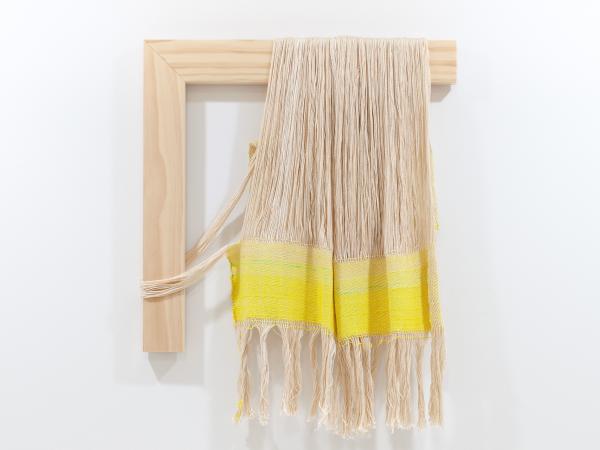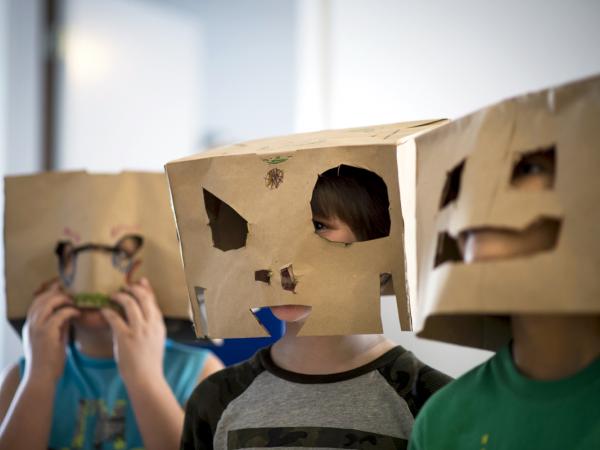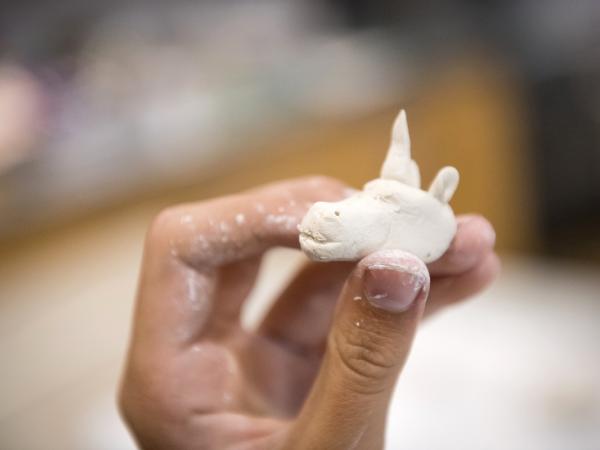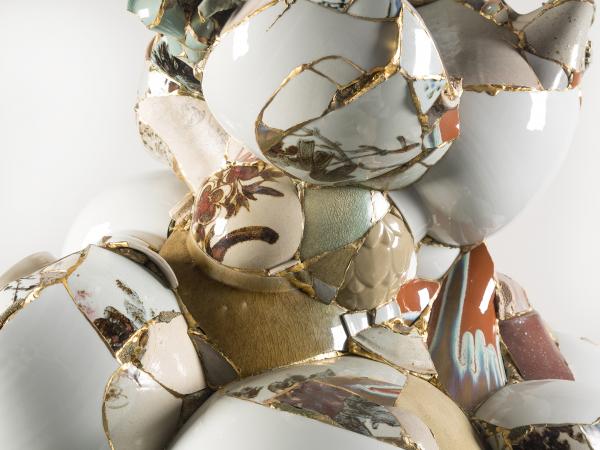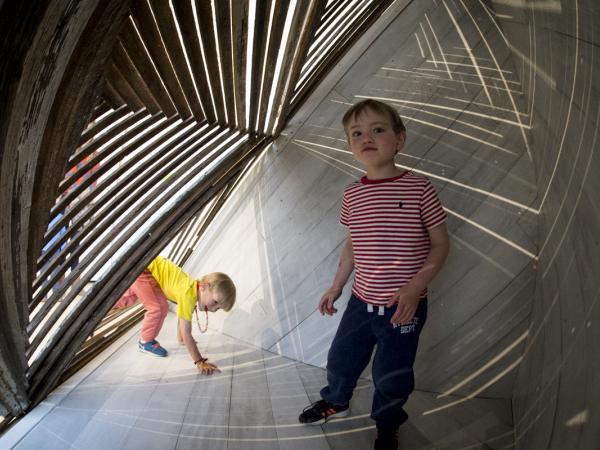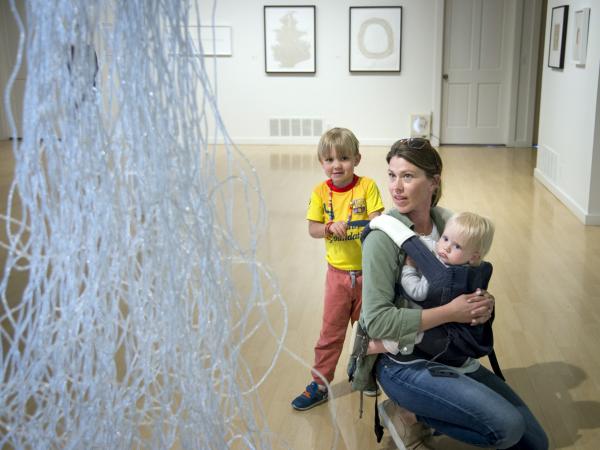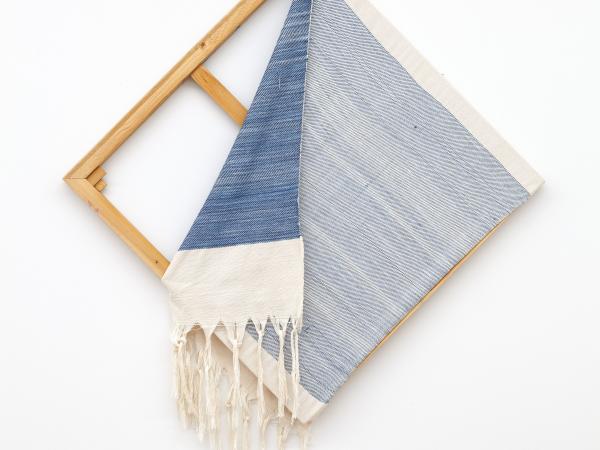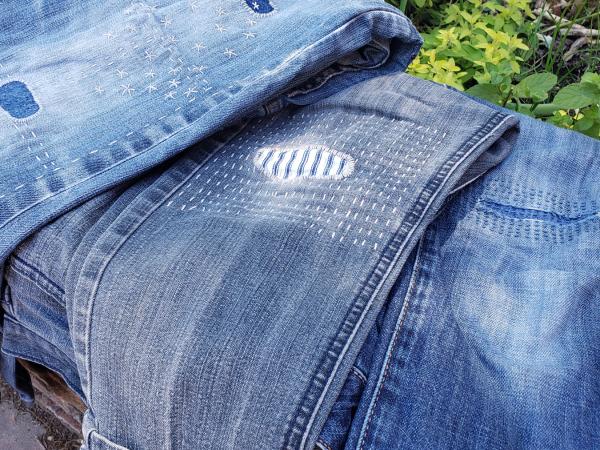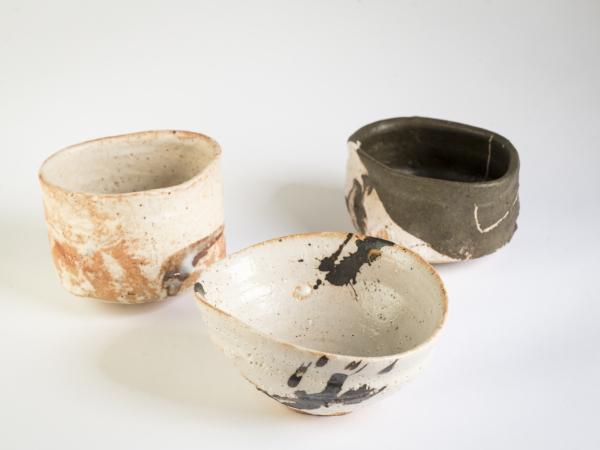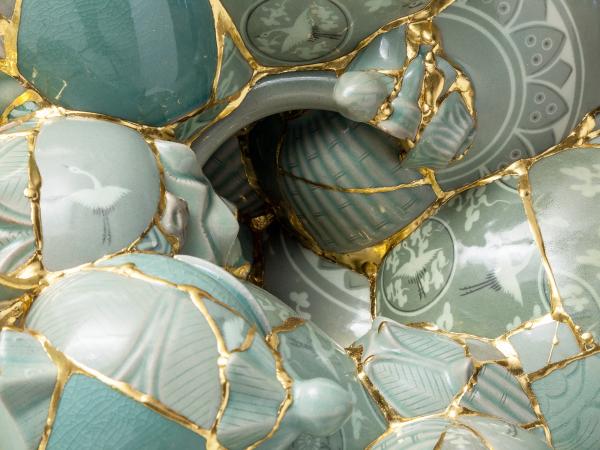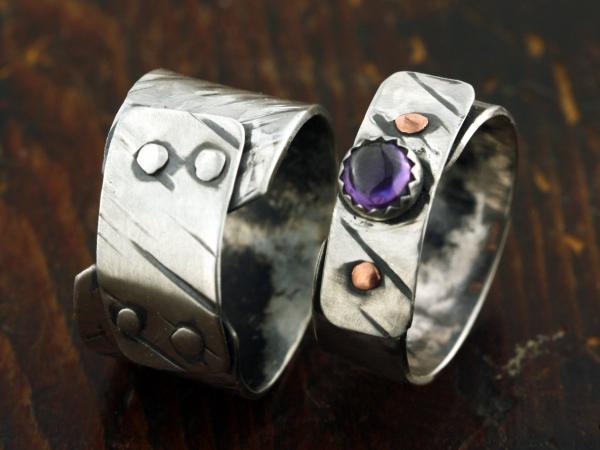MUSEUM EXHIBITION
Often defined as flawed beauty, the wabi sabi aesthetic connotes asymmetry, awkwardness and evidence of the forces of nature and time. It embraces the unconventional and broken as beauty — reminders of the world’s fragility and transience. The four artists in this exhibition come from diverse traditions. Based in East Asia, Yeesookyung and Shiro Tsujimura bring an innovative approach to ceramics in places where cultural practices are rigorously prescribed. American artists Mark Newport and Frances Trombly have each chosen the medium of fiber, historically perceived in the Western world as a lesser art, relegated to female and craft traditions. Whether raised in the East, where ideas of imperfection and wabi sabi have been cultivated for centuries, or with Western ideals of beauty and perfection, each of these artists makes art that is unconventional, raw and, in its imperfection, deeply appealing.
Transforming ripped, torn or worn pieces of cloth, Mark Newport emphasizes the place of repair with enhanced stitchery that leads to new patterns, bursts of color and a reconsideration of original form. Newport sometimes refers to his threads as stitches or scars, and while he employs traditional darning techniques, he defies the expectation that the repair should be blended in to hide the tear. Instead, Newport accentuates the “wound,” introducing new colors or textures into the host cloth.
Notions of renewal and restoration are also present in Yeesookyung’s ceramic vessels. She carefully assembles remnants of discarded Korean pots into wholly new forms, employing the traditional method of kintsugi—drawing attention to the place of repair with conspicuous lines of gold lacquer clearly articulating where one pot shard meets the next. In assembling disparate pieces from multiple originals, Yeesookyung represents these pieces in precarious and irregular new forms.
Shiro Tsujimura’s ceramic objects are uncontrived, simple forms with rustic surfaces that are enhanced by the clay’s imperfections and the fire’s trace. This collection of teabowls has been assembled by Henry Whiting, who chose them to complement the Frank Lloyd Wright studio in which he lives in Bliss, Idaho. The simplicity and purity of the Japanese aesthetic resonated with Wright, and so too with Whiting. Tsujimura’s teabowls, which at first glance appear simple and alike, are each unique shapes; every element of the pot is meant to be noticed as it nestles into two hands for tea drinking. Tsujimura’s teabowls are aligned with Japanese traditions that are centuries old but, made by an artist who came to ceramics without the restrictions imposed by a traditional apprenticeship, reflect an iconoclastic approach that allows him to work in multiple clay bodies and traditions.
Frances Trombly’s hand-woven textiles speak to a different kind of purity. She uses color sparingly, allowing the weave and warp of the material to create surface. Presented as sculptures, the bare fabrics drape and flow around simple wooden structures, some of which suggest painting’s armature. She presents material in its barest, most essential form and leaves glitches or mistakes evident, emphasizing the relationship between maker and form and honoring the time necessary for the labor.


